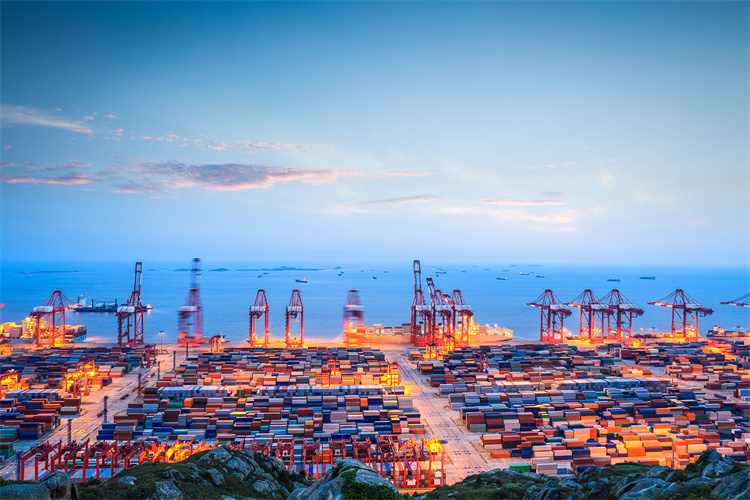Ocean Freight vs Air Freight: Choosing the Right Shipping Method

Choosing the right shipping method can save time and money. Ocean freight shipping and air freight offer different benefits. Understanding these differences helps you make smart decisions. Ocean freight shipping works well for large volumes. Air freight suits urgent deliveries. Each method impacts cost, speed, and safety. Knowing what fits your needs ensures smooth logistics.
Understanding Ocean Freight and Air Freight

Definition and Overview
Ocean Freight
Ocean freight shipping involves transporting goods by sea. Ships carry large volumes across long distances. This method suits bulk shipments. Businesses often choose ocean freight shipping for cost-effectiveness. Large containers hold various types of cargo. Ports around the world facilitate this process.
Air Freight
Air freight uses airplanes to move goods quickly. Speed defines this method. Urgent deliveries benefit from air freight. Smaller shipments fit well with this option. Airports handle these shipments efficiently. Air freight offers reliability and safety.
Key Characteristics
Ocean Freight Characteristics
Ocean freight shipping provides a cost-effective solution. Ships carry massive loads, making it ideal for heavy goods. Transit times are longer, often taking weeks. Weather conditions can affect schedules. Security measures ensure safe transport. Environmental impact is lower compared to air freight.
Air Freight Characteristics
Air freight offers speed and efficiency. Deliveries happen within days. Costs are higher due to rapid service. Airplanes handle smaller cargo sizes. Strict regulations govern hazardous materials. Security remains a top priority. Air freight offers speed. Air freight has a higher carbon footprint.
Comparative Analysis

Timeline
Speed of Delivery
Ocean freight shipping offers a slower pace. Ships take weeks to reach destinations. Air freight moves faster. Planes deliver goods in days. Urgent shipments benefit from air freight. Quick delivery ensures timely arrivals.
Transit Time Considerations
Ocean freight shipping involves longer transit times. Weather and port delays can affect schedules. Air freight provides more predictable timelines. Flights operate on fixed schedules. Businesses with tight deadlines prefer air freight. Ocean freight suits less time-sensitive cargo.
Type and Amount of Cargo
Suitable Cargo for Ocean Freight
Ocean freight shipping handles large volumes. Bulk goods fit well on ships. Heavy machinery and vehicles often use ocean freight. Non-perishable items travel safely by sea. Businesses save costs with ocean freight shipping. Large containers accommodate diverse cargo types.
Suitable Cargo for Air Freight
Air freight suits smaller shipments. Lightweight items travel efficiently by air. Perishable goods benefit from quick transit. Electronics and high-value products prefer air freight. Strict regulations apply to hazardous materials. Air freight ensures safe handling of delicate cargo.
Budget Considerations
Cost Factors for Ocean Freight
Ocean freight shipping offers cost savings. Ships carry massive loads at lower rates. Fuel and port fees impact costs. Longer transit times reduce expenses. Bulk shipments benefit from ocean freight shipping. Businesses save money with ocean freight.
Cost Factors for Air Freight
Air freight incurs higher costs. Speed and efficiency come at a price. Fuel surcharges affect air freight rates. Smaller shipments increase per-unit costs. Urgent deliveries justify air freight expenses. Businesses pay more for rapid service.
Security and Safety
Security Measures in Ocean Freight
Ocean freight shipping uses strict security protocols. Ports implement advanced surveillance systems. Cargo undergoes thorough inspections. Trained personnel handle goods carefully. Security teams monitor shipments continuously. Ocean freight shipping ensures safe transport for your cargo.
Security Measures in Air Freight
Air freight prioritizes safety. Airports use cutting-edge technology for security checks. X-ray machines scan every package. Security personnel inspect high-value items closely. Air freight companies follow international safety standards. Your shipments remain secure during transit.
Environmental Impact
Environmental Concerns with Ocean Freight
Ocean freight shipping impacts the environment. Ships emit greenhouse gases. Fuel consumption affects marine ecosystems. Companies work to reduce emissions. New technologies aim to make ocean freight shipping greener. Choosing eco-friendly options helps protect the planet.
Environmental Concerns with Air Freight
Air freight has a significant carbon footprint. Planes consume large amounts of fuel. Emissions contribute to air pollution. Airlines invest in more efficient aircraft. Sustainable practices reduce environmental impact. Consider air freight's environmental effects when choosing a shipping method.
Decision-Making Guide
Evaluating Your Needs
Assessing Cargo Requirements
Think about what you need to ship. Different goods require different methods. Large items fit better with ocean freight. Small or delicate items prefer air freight. Perishable goods need quick transport. Electronics often choose air freight for safety. Consider the nature of your cargo.
Budget and Time Constraints
Money and time play big roles in shipping choices. Ocean freight saves money but takes longer. Air freight costs more but delivers faster. Urgent shipments need air freight. Bulk shipments save with ocean freight. Weigh your budget against delivery speed needs.
Making the Final Choice
Weighing Pros and Cons
List the benefits and drawbacks of each method. Ocean freight offers cost savings and large capacity. Air freight provides speed and reliability. Consider environmental impact. Ships emit less carbon than planes. Think about security measures. Air freight has stricter checks.
Case study of the advantages of JUSDA sea and air freight
JUSDA offers several advantages in both sea and air freight services, making it a competitive player in the logistics industry. Here are the key advantages for each:
Sea Freight Advantages:
Extensive Network and Coverage:
JUSDA provides shipping services to over 500 destinations worldwide, with more than 2,500 international maritime routes.
The company has a mature global ocean freight network, ensuring stable space allocation and multiple modes of transport, including FCL (Full Container Load) and LCL (Less than Container Load).
Cost Management and Stability:
JUSDA consolidates cargo volumes and purchases collectively, implementing pricing schemes and cost optimization measures to assure stable and competitive pricing services regardless of peak or off-peak seasons.
They offer stable prices with seasonal/monthly fixed quotes, which is beneficial for budgeting and cost predictability.
Value-Added Services:
The company provides dedicated warehouse operations and distribution services, along with specialized offerings such as temperature-controlled and special container transportation.
JUSDA also offers tailored solutions for different markets, including NF (non-Foxconn) goods, auto parts, and renewable energy products.
Specialized Routes and Services:
JUSDA offers various specialized routes such as the South China/East China Express Sea Dispatch and dedicated lines to the US East and Southeast, ensuring fast and reliable delivery times.
They partner with major carriers like OOCL, COSCO, and WANHAI to provide high-cost effectiveness and support for seasonal and monthly fixed quotes.
Air Freight Advantages:
Mature Route Network:
JUSDA has a well-established air freight route network, including routes like China-Mexico-US and Vietnam-US, with planned expansions to new routes such as China-India.
The company accurately plans principal routes between China and Europe, the Americas, and Southeast Asia, adjusting airfreight resource structures based on market demand and cargo volume characteristics.
Cost Optimization:
JUSDA utilizes Block Space Agreements (BSA) combined with outsourced resources and optimizes air freight consolidation practices to lower air freight costs.
They offer a mature three-stage consolidation service, which optimizes airfreight costs and flexibly utilizes BSA and external resources to adapt to seasonal fluctuations.
Operational Efficiency:
The company delivers efficient operational capabilities at both main gateway airports and inland airports, enhancing ground handling capabilities and door-to-door services abroad.
By combining its own capacity and partner resources, JUSDA ensures fast and secure air freight services on a global scale.
Service Customization and Innovation:
JUSDA develops standard air freight products for routes such as China-India and China-Europe and plans to launch new transnational and regional routes like Japan/Taiwan-Vietnam and India.
They also consider organizing airfreight return cargoes to strengthen their competitive edge in service offerings.
Practical Considerations
Look at practical factors before deciding. Check available routes and schedules. Some destinations favor one method. Consider handling requirements. Fragile items need careful transport. Review regulations for hazardous materials. Choose the method that aligns with your needs.

JUSDA Solutions
To provide you with professional solutions and quotations.
Choosing the right shipping method depends on your specific needs. Ocean freight suits large volumes and cost savings. Air freight offers speed for urgent deliveries. Consider factors like cargo type, budget, and timeline. Align your choice with these aspects for effective logistics. Consulting with logistics experts can provide personalized advice. Make informed decisions to ensure smooth shipping experiences.
See Also
2024: Latest Developments in Ocean Freight Logistics Revealed
Maximizing Savings: A Comprehensive Logistics Cost Reduction Manual
Exploring Top Global Logistics Firms: An In-Depth Guide
Analyzing the Effects: Trends in Logistics Risk Deciphered
A Detailed Look into the Future of Less-Than-Truckload Shipping
